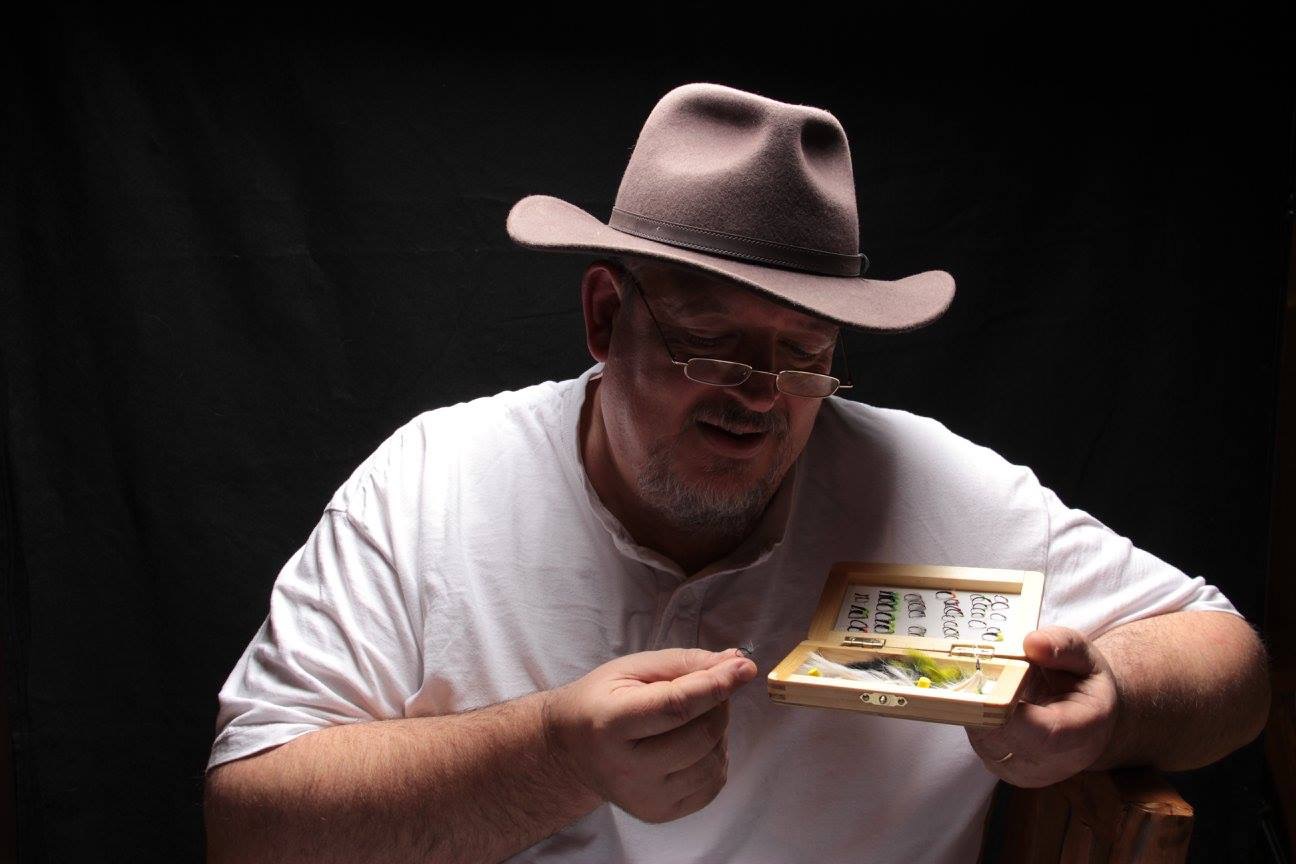The Klinkhammer Fly Pattern Initial Design
 Get Stunning Klinks here - The Dutch angler Hans Van Klinken originally tied this fly as an emerging caddis pattern to catch grayling as they floated in the surface film and called it the "Klinkhammer". However Klinkhammer flies can also be successfully used imitating other emerging nymphs. Hans also fished many of the rivers in Scandinavia as well as in his native Holland. His mentor was a Swedish fly fisher, Kenneth Bostrom who had created a fly called the Rackelhammer to imitate hatching sedge. It floated when cast upstream but Hans found if it was tweaked, to suggest life, it sank. Hans adapted the idea and made Klinkhammers as a fly that still floated after it had been tweaked. It became known as the 'Klinkhammer Special' . At first he bent the hook of a parachute fly so that the abdomen would sink below the surface and the thorax would float. Later he developed a special hook that did the same but imitated the curved body angle of the insect as it hangs below the surface just as it starts to emerge. This is what makes klinkhammer different from a regular parachute dry fly. The abdomen serves as a primary trigger, penetrating the surface film and getting noticed by trout from a great distance, well before they pick up on the above surface footprint features.
Get Stunning Klinks here - The Dutch angler Hans Van Klinken originally tied this fly as an emerging caddis pattern to catch grayling as they floated in the surface film and called it the "Klinkhammer". However Klinkhammer flies can also be successfully used imitating other emerging nymphs. Hans also fished many of the rivers in Scandinavia as well as in his native Holland. His mentor was a Swedish fly fisher, Kenneth Bostrom who had created a fly called the Rackelhammer to imitate hatching sedge. It floated when cast upstream but Hans found if it was tweaked, to suggest life, it sank. Hans adapted the idea and made Klinkhammers as a fly that still floated after it had been tweaked. It became known as the 'Klinkhammer Special' . At first he bent the hook of a parachute fly so that the abdomen would sink below the surface and the thorax would float. Later he developed a special hook that did the same but imitated the curved body angle of the insect as it hangs below the surface just as it starts to emerge. This is what makes klinkhammer different from a regular parachute dry fly. The abdomen serves as a primary trigger, penetrating the surface film and getting noticed by trout from a great distance, well before they pick up on the above surface footprint features.
Klinkhammer Flies Fishing Techniques
Use a tapered leader for correct turnover of the Klinkhammer when casting, it should drop grently into the water when cast. A Klinkhammer fly is designed to have 90% of the fly under water so stick the fly in your mouth (carefully) and apply spittle to the body, this will help it sink in the water. The parachute of the Klink and the top hackle should have Gink fly floatant applied (unless it is a cdc post in which case only apply CDC floatant to the parachute!). The fly should now sit with the body in the subsurface and the parachute sat on the surface film.
- Plan the first cast don't cast immediately
- Watch where the rises are, they may be fish cruising forward or solitary fish stationary.
- Once you understand if it is a moving or stationary fish try and cast 12 inches to 36 inches ahead of the fish
- Maintain Make sure the fly line and leader do not drag the Klinkhammer aking its passage appear un-natural, if they start dragging the fly then upstream mend, i.e. flick the flyline and leader upstream so it stops dragging the fly. This will enable the fly to continue naturally to the end of the drift
We have a vast range of klinkhammers in stock, ranging from traditional Klinkhammers to Sandys Blank Buster Klinkhammers.
Other Klinkhammer Fishing Techniques
 Klinks can be used New Zealand style or in teams with:
Klinks can be used New Zealand style or in teams with:
- With buzzers or nymhs suspended below
- With CDC emergers on the surface where the Klink acts as both an indicator and an adult emerger
- With micro gnats like Griffiths Gnats which are virtually invisible and the Klink acts as both indicator and fly at distance
With all of these techniques the Klinkhammer acts both as an emerging adult and as an indicator. You can use this technique with micro flies distance casting where it works really well and bite indication at distance becomes very difficult.
Klinkhammer Top 5 Tips Summary
- Moisten the body with water or saliva, put floatant on the post and wing to ensure correct fly seating
- Cast forward of moving fish
- Be adventurous, suspend small buzzers or nymphs below Klinks
- Use Klinks as flies AND indicators for small midges like Griffiths Gnats at distance
- Never allow the current to drag the Klinkhammer making it look un-natural







